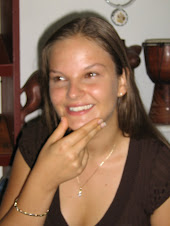Puerto Plata

The North Coast is the center of a third of the nation's hotel rooms, or more than 17,000. At the heart of this region, the city of Puerto Plata curves around the base of towering Mt. Isabel de Torres, whose pinnacle can be reached by an electrified sky lift system called the “teleférico”.
A manicured botanical garden dominated by an illuminated statue of Christ - a scaled-down version of the one in Rio de Janeiro - crowns its summit. More adventurous types can reach the summit on foot. The charm of Puerto Plata, the largest city on the North Coast, is enhanced by the extent and variety of its Victorian architecture, unrivaled by any other Dominican city. Stylistically, the gingerbread motifs, wooden 'lace' filigree, and pastel colors of its houses and public buildings convey the romantic aura of an earlier time, but functionally they house a tourist-oriented city's businesses, offices, shops, bars, restaurants and clubs.
History is also preserved here in the imposing San Felipe Fort, built by the Spaniards in the 16th century as protection against seaborne invaders. The fort, which was used as a prison until the 1960's, now houses a fine museum that documents its interesting history. Take time to see Puerto Plata's extraordinary Amber Museum, the Brugal rum factory, and the length of the Malecón, the lively seaside boulevard.
Attractions
Visit the city's central park, Parque Luperon, and make a stop at the picturesque church, Iglesia de San Felipe. Several inexpensive cafeterias are nearby, in addition to numerous stores specializing in local crafts. In downtown Puerto Plata you will find the last remaining Victorian gingerbread buildings - elegant 19th century structures which are quickly disappearing due to commercial development.
Located on the second floor of a Victorian mansion, the Amber Museum is perhaps one of Puerto Plata's best known tourist attractions. Open from 9:00 am until 5:00 pm, Monday through Saturday, the Amber Museum features collections of fossilized resin (Amber), some of which contain remarkably preserved specimens dating back thousands of years.
Undoubtedly Puerto Plata's most impressive geographic feature, 2,600 foot Mount Isabel is also a popular attraction for tourists and locals alike. After a seven minute cable car ride up the nearly vertical slope, visitors will find botanical gardens, a statue of Christ similar to the one in Rio de Janeiro, and a superb restaurant, in addition, of course, to breathtaking views of the city and surrounding sea.
Playa Dorada
Home to the majority of Puerto Plata's "all-inclusive" resorts, Playa Dorada features two golf courses, casinos, a shopping mall, and over 15 miles of beaches and the Home of the Sea Pro Divers Company. Although most of the property in Playa Dorada is private, the beach itself is open to the public and can be accessed at the end of the main road running through the complex.

Producing over a million and a half liters of white and dark rum each year, Brugal is the drink of choice for many North Coast Dominicans (with Barcelo being favoured in the South). Although no distillation actually takes place at the Brugal Factory, visitors are given a brief tour of Brugal's bottling operations and are treated to a refreshing drink featuring, but of course, Brugal rum. Open 9:00 am - noon & 2:00 pm - 5:00 pm, Monday through Friday. Admission is free.
The Malecón is an ocean side road featuring numerous cafes and small restaurants. Although the small beach is not suitable for swimming, a leisurely stroll along the Malecón offers fresh ocean breezes and excellent people watching. The Malecón is especially popular on weekends and at night when road side vendors prepare small snacks and several discos blast music into the early morning hours.
Walking west along the Malecón will lead visitor to Fuerte San Felipe, Puerto Plata's only remaining colonial structure. Located on a small peninsula on Puerto Plata Bay, Bahia de Puerto Plata, it was at Fuerte San Felipe that Columbus had hoped to establish the first Spanish colony in the New World (the colony in Puerto Plata, however, did not last long and the Spanish resettled on the island's Southern Coast at Santo Domingo). The fort features a moat, historical artifacts, and a small museum.

No comments:
Post a Comment